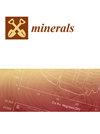木材硅化研究综述
IF 2.2
4区 地球科学
Q2 GEOCHEMISTRY & GEOPHYSICS
引用次数: 5
摘要
几十年来,木材硅化一直被视为一种相对简单的再矿化过程,当溶解在地下水中的二氧化硅沉淀以填充多孔组织内的空隙时,就会发生再矿化。特定二氧化硅矿物的存在通常归因于成岩作用的变化。根据现代温泉的证据推断出快速硅化的可能性。对世界各地跨越漫长地质时期的硅化木材进行的广泛检查表明,这些概括是不可靠的。相反,木材硅化可能通过多种途径发生,再矿化相对罕见。矿化通常涉及连续事件中的二氧化硅沉淀,其中地球化学环境的变化导致各种多晶型共存于单个样品中。成岩作用的变化可能会在以后改变矿物成分,但对许多标本来说,成岩作用并不是控制矿物分布的主要过程。硅化率主要与溶解二氧化硅水平和包围埋藏木材的沉积物的渗透性有关。在现代温泉中,二氧化硅会在木材上快速沉积,但与大多数地质环境中存在的情况相比,这些情况具有不同的物理和化学条件。硅化所需的时间是可变的,不能用任何概括来描述。本文章由计算机程序翻译,如有差异,请以英文原文为准。
Silicification of Wood: An Overview
For many decades, wood silicification has been viewed as a relatively simple process of permineralization that occurs when silica dissolved in groundwater precipitates to fill vacant spaces within the porous tissue. The presence of specific silica minerals is commonly ascribed to diagenetic changes. The possibility of rapid silicification is inferred from evidence from modern hot springs. Extensive examination of silicified wood from worldwide localities spanning long geologic time suggests that these generalizations are not dependable. Instead, wood silicification may occur via multiple pathways, permineralization being relatively rare. Mineralization commonly involves silica precipitation in successive episodes, where changes in the geochemical environment cause various polymorphs to coexist in a single specimen. Diagenetic changes may later change the mineral composition, but for many specimens diagenesis is not the dominant process that controls mineral distribution. Rates of silicification are primarily related to dissolved silica levels and permeability of sediment that encloses buried wood. Rapid silica deposition takes place on wood in modern hot springs, but these occurrences have dissimilar physical and chemical conditions compared to those that exist in most geologic environments. The times required for silicification are variable, and cannot be described by any generalization.
求助全文
通过发布文献求助,成功后即可免费获取论文全文。
去求助
来源期刊

Minerals
MINERALOGY-MINING & MINERAL PROCESSING
CiteScore
4.10
自引率
20.00%
发文量
1351
审稿时长
19.04 days
期刊介绍:
Minerals (ISSN 2075-163X) is an international open access journal that covers the broad field of mineralogy, economic mineral resources, mineral exploration, innovative mining techniques and advances in mineral processing. It publishes reviews, regular research papers and short notes. Our aim is to encourage scientists to publish their experimental and theoretical results in as much detail as possible. There is no restriction on the length of the papers. The full experimental details must be provided so that the results can be reproduced.
 求助内容:
求助内容: 应助结果提醒方式:
应助结果提醒方式:


